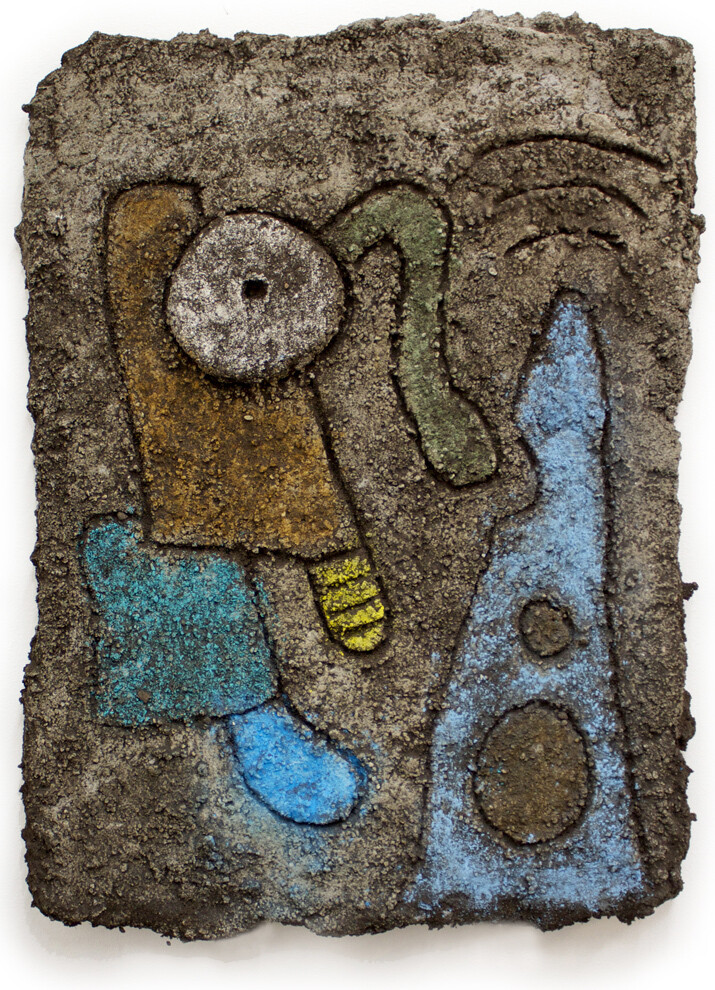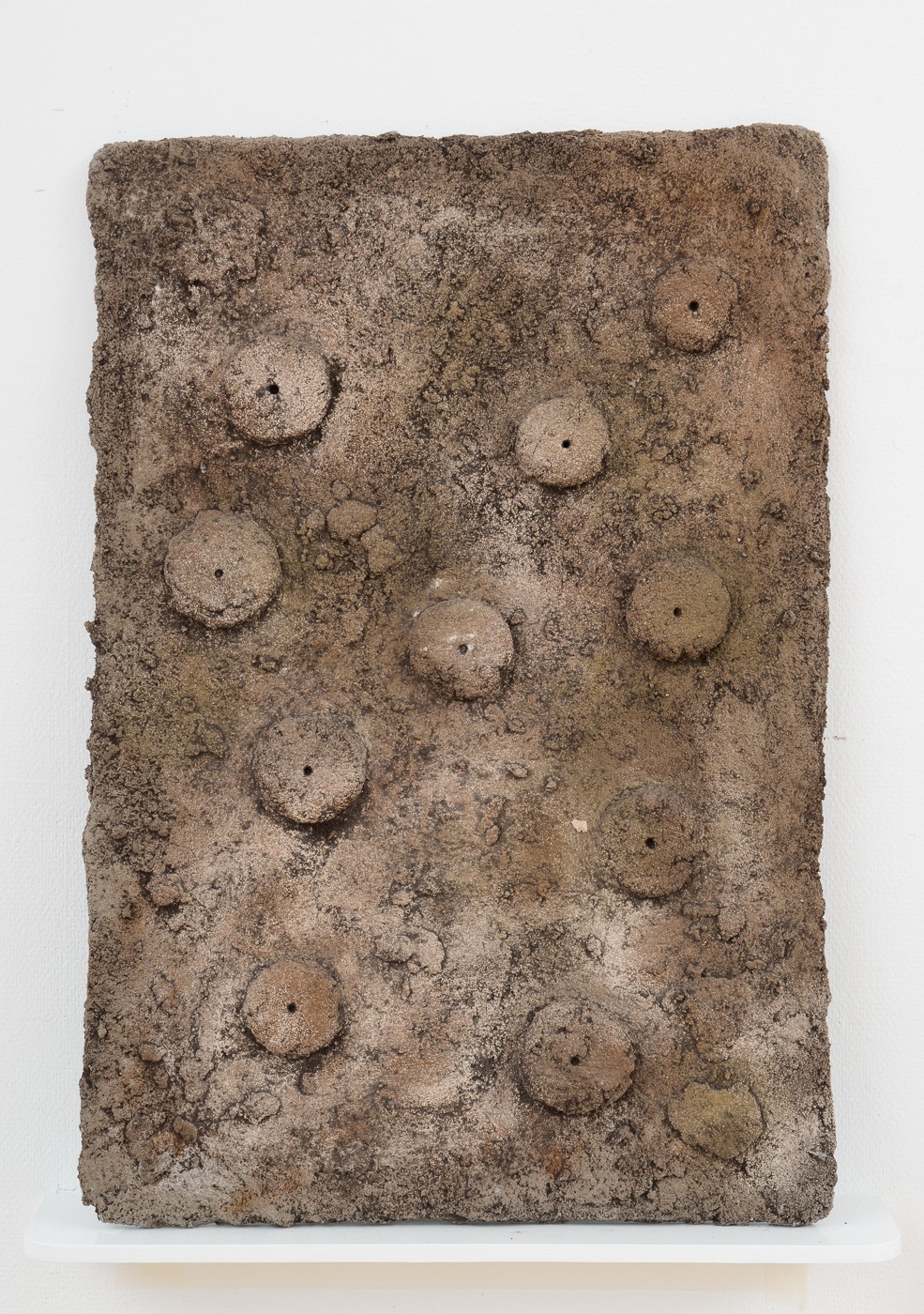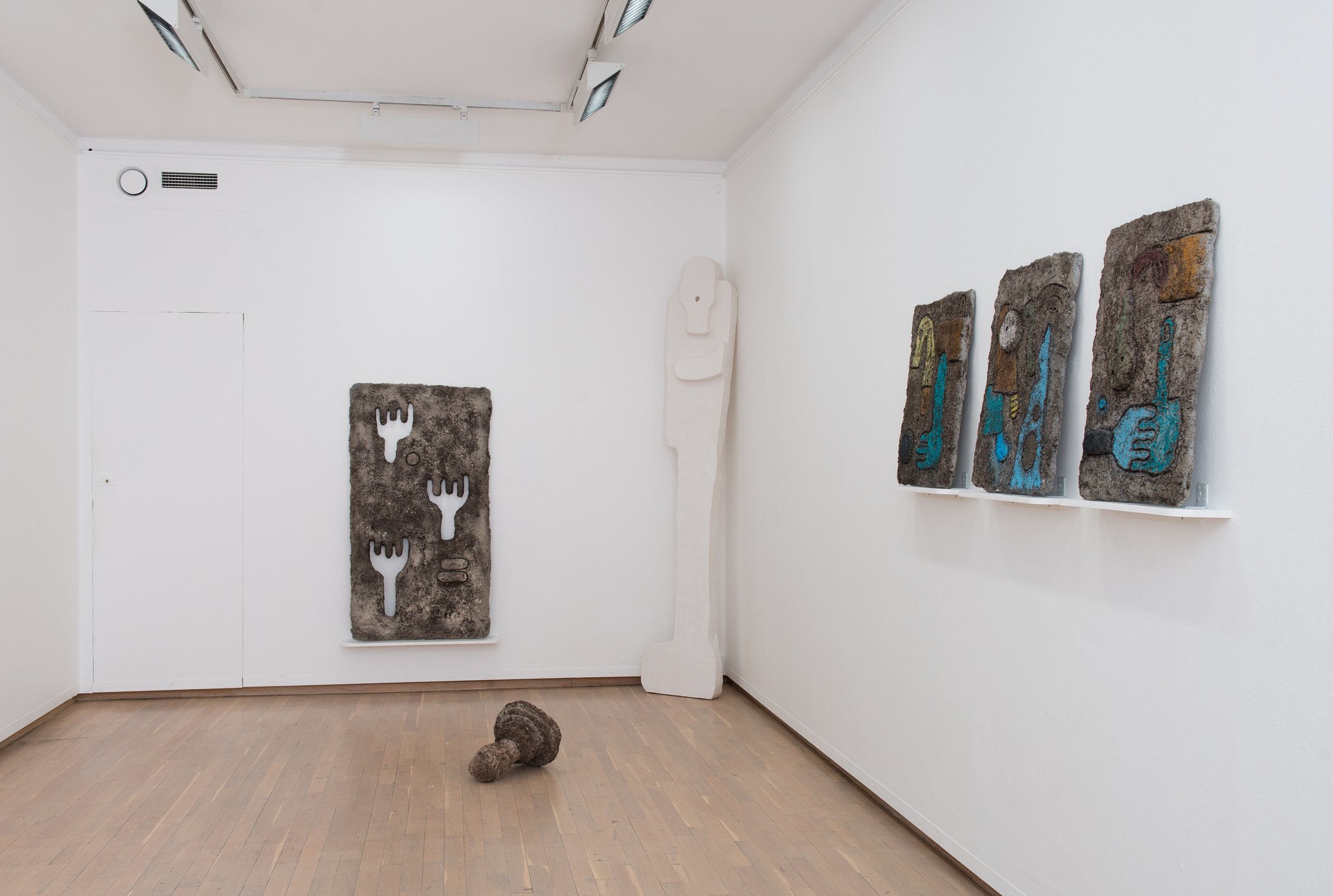Fret Not Upon Thy Blue Funk
Kunstnerforbundet har gleden av å presentere Lene Baadsvig Ørmens
utstilling ”Fret Not Upon Thy Blue Funk” i Vindussalen. Utstillingen
består av nye skulpturer og relieffer, hovedsakelig utformet med betong,
pigment og jord. Prosessen har hentydninger til en arkeologisk
utgraving, men de ferdige verkene vi ser forholder seg ikke til en
forgangen tid. De fremstår som rester fra en ukjent kultur eller fiktiv
sivilisasjon og eksisterer uten referanse til et definert tidspunkt
eller system av mening.
Ørmens skulpturer gir oss en tankevekkende tilnærming til sentrale
retninger og forestillinger i kunsten som land art, abstrakt skulptur og
materialkultur, samt hvordan vi forholder oss til fremmedartete ting og
hvordan tingene kan peke tilbake på oss.
Ørmen (1984) er utdannet ved Kunsthøgskolen i Bergen (2005-2008) og Kunstakademiet i Oslo (20011-2013) og har gjort seg bemerket med en rekke separatutstillinger de siste årene, blant annet ved Unge Kunstneres Samfunn (UKS) i Oslo, Kunsthall Stavanger og Another Space i København. Hun har også deltatt i gruppe utstillinger ved blant annet Autocenter i Berlin, Fat Relic i London, Galleri BOA i Oslo og Residency Unlimited i New York.
Til utstillingen følger en tekst av Jenni Nurmenniemi, kurator av HIAP – Helsinki International Artist Programme, hvor hun går i dialog med Lene Baadsvig Ormen.
Lene Baadsvig Ørmen
Shapes of temporal disorientation
Jenni Nurmenniemi, curator of HIAP – Helsinki International Artist Programme, in dialogue with Lene Baadsvig Ormen
Stepping into Lene Baadsvig Ørmen’s exhibition ‘Fret Not Upon Thy Blue
Funk’ one encounters an ethereally gleaming entity standing tall in the
corner. Holy Hustler, a protagonist of a non-linear narrative, watches
over a congregation of curvy, earthy objects whose rough surfaces
shimmer softly in vivid mineral pigments.
The objects grouped in the space seem to hesitate between a two and a
three-dimensional existence. On the walls colorful, simply yet elegantly
carved reliefs with enigmatic motifs resist decoding attempts. A human
mind, ever bound to attach meaning onto everything strives to interpret
the signs and symbols, to search for a hidden code.
These objects are not without meaning although the intentions they carry
remain uncovered. They seem as remnants, possibly relics from an unknown
culture, or from a past of a fictive civilization. Although looking as
if they had surfaced from the depths of time conveying a secret graphic
codex, they do not possess history; they exist without reference to any
defined moment in time or system of meaning. The shapes are balancing
between something familiar and unfamiliar. This sparks a sensation of
encountering an alien history. Through their ambiguous presence, these
sculptures seem to challenge the idea of a linear time altogether.
One might be faced with similar ambiguities when encountering remains of
an ancient civilization whose cultural codes have become indecipherable
along millennia of oblivion. These kinds of encounters shake the
conception of a linear history defined by the idea of continuous
chronological progress. They can also shape what is projected onto the
future. Such is the case for instance with the ruins of Pumapunku in
Tiwanaku, Bolivia. The construction of this ancient Andean center has
apparently required technologies known to have been available only
several millennia after its estimated building period. To acknowledge
this requires questioning of mainstream interpretations of human
history.
The sculptural presences exhibited on this occasion have adopted their
forms via an artist who is simultaneously their creator and the
archeologist who excavates them. The process through which the pieces
appear is circular like earth’s life cycles. The life of the sculpture
actually involves a burial, as Baadsvig Ørmen covers the newly shaped
forms with flower soil and then resurfaces them. Part of their mystery
lies in the paradox that despite them being shapes born out of this
earth there is something unearthly, and quite unsettling, to them.
In addition to a slight temporal confusion caused by the sculptures, a
subtle sense of displacement forms also on a textual level. The title of
the exhibition “Fret not upon Thy Blue Funk” sounds a bit like a mantra
or a prayer that shadows our contemporary language: ‘blue Funk’ being
urban slang referring to a state of confusion, absentmindedness, and
deep thought typically brought about by a profound experience or idea,
while ‘Fret not upon Thy…’ echoes a bygone era with its nowadays
bypassed linguistic characteristics.
Admitting feelings of disorientation, uncertainty and confusion is an
unspeakable challenge to contemporary earth-dwellers who nurture the
more or less conscious hope of leading a meaningful human life. Via
communication and belief systems – be they holy or profane – human life
tends to be classified into as neat categories as possible. What seems
persistent is the logic of binaries according to which the world is
thought to maintain its order. There is always a profound sense of
danger when the dichotomist order becomes questionable. How ‘not to
fret’ when holding onto the promises and structures, of ever evolving
civilizations becomes more impossible by the day. It’s blue funk all
over, all the time. How do you deal with a permanent state of
uncertainty?
For Lene Baadsvig Ørmen the answer lies in leaping into the unknown,
digging into and following earth’s slow life cycles through a process of
appearing, and giving up to the mysterious powers at play. The Holy
Hustler and its unruly congregation of enigmatic forms might have
sacred, profane or functional intentions. Whichever the case, they hold
their secrets.












